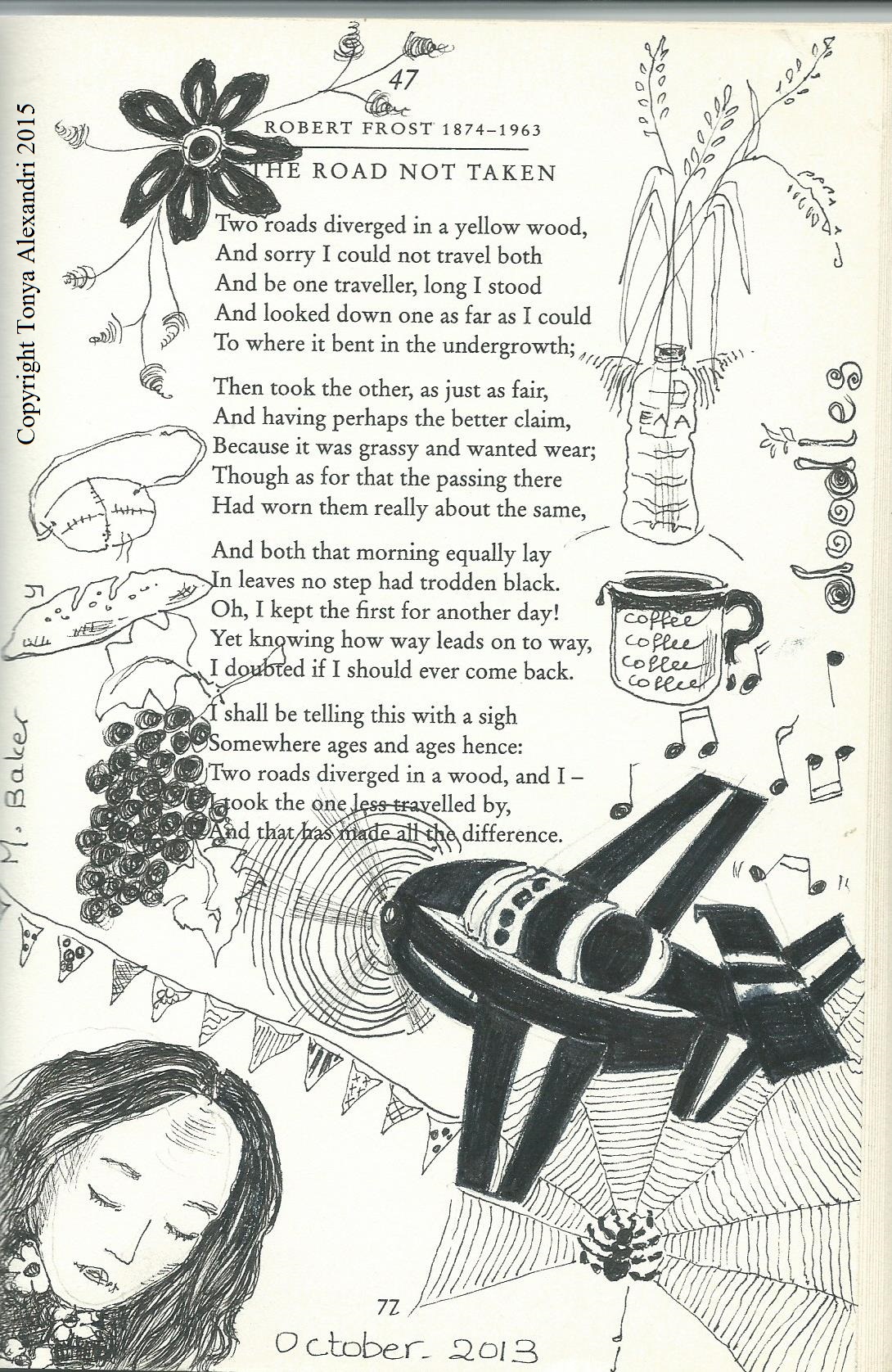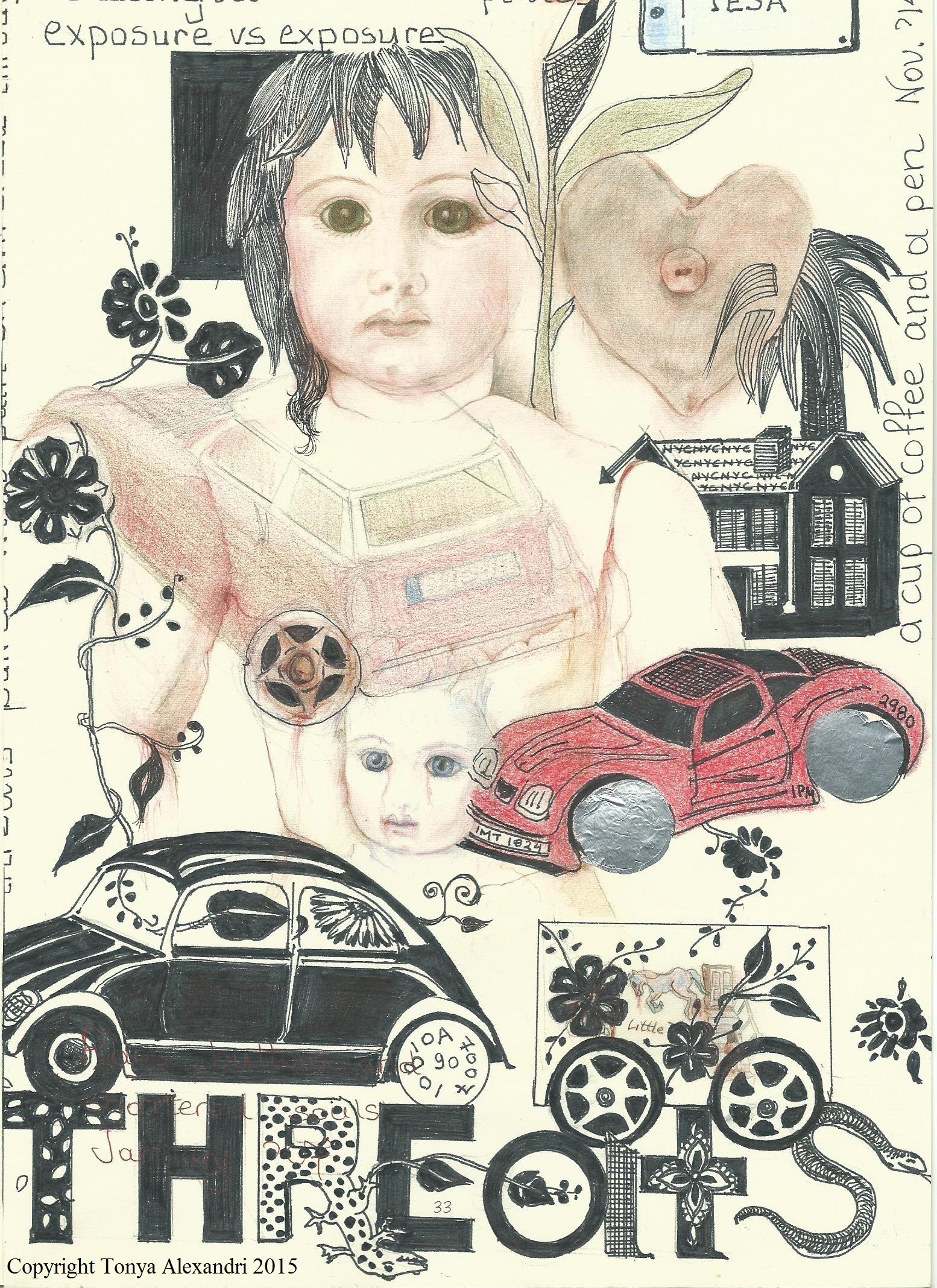Doodles in ink on book pages
A. The first page, which contains a favourite poem by Robert Frost, is from the poem anthology The Nation’s Favourite Poems του BBC (1998). This book was given to me by a couple, Kostas L. and Michelle B., who worked for me as a teacher at the English School I ran in the past, in return for pet-sitting when they were away.
 B. This second page is from my own book Let me be (2008)
B. This second page is from my own book Let me be (2008)
 Doodling is meditative in nature and has soothing, self-regulating and relaxing potential. Although doodles are often created while we are preoccupied with something else or when we are bored and unfocused, perhaps waiting for a means of transport, speaking on the phone, during breaks or lessons, while watching TV or trying to study, it may not always be so, because one can engage with doodling as a form of quick, spontaneous art to enhance problem solving and processing of information. The following ideas are a brief summary of Malchiodi’s article: © 2014 Cathy Malchiodi, PhD, LPCC, LPAT, ATR-BC (link is external). She makes reference to Sunni Brown’s claims that doodling is ‘deep thinking in disguise and that it is a simple, accessible tool for problem-solving in general’. She also refers to research findings that indicate that doodling increases memory retention. Cathy Malchiodi suggests that one can achieve cortisol reduction via doodling. She also refers to Zentangle®, which is a purposeful, structured form of drawing, similar to doodling, and which also seems ‘to support mindful states of being’. It consists of a series of repetitive straight lines, curves and dots drawn on a small square and is much more focused and deliberate, but still allows freedom in the choice of patterns, lines, shapes and shading.
Doodling is meditative in nature and has soothing, self-regulating and relaxing potential. Although doodles are often created while we are preoccupied with something else or when we are bored and unfocused, perhaps waiting for a means of transport, speaking on the phone, during breaks or lessons, while watching TV or trying to study, it may not always be so, because one can engage with doodling as a form of quick, spontaneous art to enhance problem solving and processing of information. The following ideas are a brief summary of Malchiodi’s article: © 2014 Cathy Malchiodi, PhD, LPCC, LPAT, ATR-BC (link is external). She makes reference to Sunni Brown’s claims that doodling is ‘deep thinking in disguise and that it is a simple, accessible tool for problem-solving in general’. She also refers to research findings that indicate that doodling increases memory retention. Cathy Malchiodi suggests that one can achieve cortisol reduction via doodling. She also refers to Zentangle®, which is a purposeful, structured form of drawing, similar to doodling, and which also seems ‘to support mindful states of being’. It consists of a series of repetitive straight lines, curves and dots drawn on a small square and is much more focused and deliberate, but still allows freedom in the choice of patterns, lines, shapes and shading.
